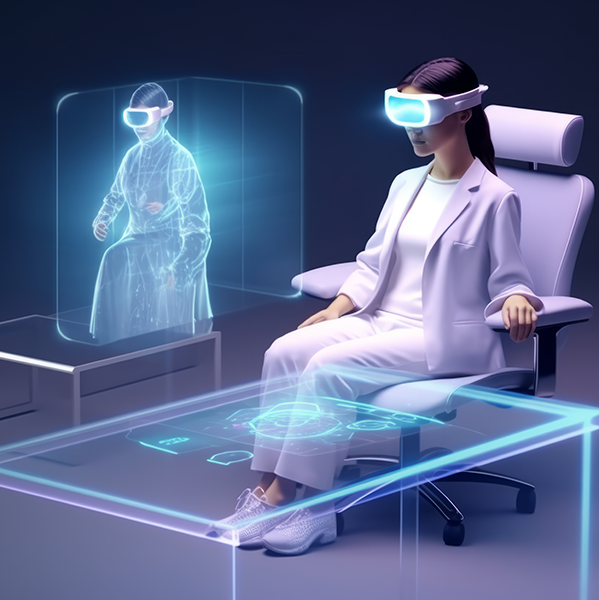
Virtual Reality in Healthcare: Transforming Patient Care
Introduction
Virtual Reality (VR) has made significant strides in recent years, emerging as a powerful tool in various industries. One of the most transformative applications of VR is in healthcare, where it is revolutionizing patient care, medical training, and therapeutic practices. In this blog post, we will explore how VR is being used to enhance healthcare and the numerous benefits it offers to patients and professionals alike.
1. Pain Management and Anxiety Reduction
VR is proving to be an effective tool for pain management and anxiety reduction. By immersing patients in calming virtual environments, VR can distract them from pain and discomfort during medical procedures. For example, patients undergoing chemotherapy or wound care can use VR headsets to escape into serene landscapes, significantly reducing their perception of pain and anxiety. Studies have shown that VR can reduce the need for pain medication, leading to a more comfortable and pleasant experience for patients.
2. Physical and Occupational Therapy
In physical and occupational therapy, VR provides an innovative way to engage patients in their rehabilitation exercises. Virtual reality games and simulations can be tailored to the specific needs of each patient, making therapy more enjoyable and motivating. Patients recovering from strokes, injuries, or surgeries can practice movements and exercises in a virtual setting, which can help improve their motor skills and overall recovery. VR also allows therapists to track progress and adjust treatment plans in real-time.
3. Medical Training and Education
VR is transforming medical training by providing students and professionals with realistic, hands-on experience without the risks associated with real-life procedures. Medical students can practice surgeries, diagnose conditions, and learn anatomy through immersive simulations. These virtual experiences allow for repeated practice, instant feedback, and the ability to explore complex medical scenarios. VR training can improve the competence and confidence of healthcare providers, ultimately leading to better patient outcomes.
4. Mental Health Treatments
Virtual Reality is being used to treat various mental health conditions, including anxiety, PTSD, and phobias. Through VR exposure therapy, patients can confront and manage their fears in a controlled and safe environment. For example, someone with a fear of heights can gradually experience heights through VR, helping them desensitize and overcome their phobia. VR therapy is also used to provide relaxation techniques and mindfulness exercises, aiding in stress reduction and overall mental well-being.
5. Surgical Planning and Visualization
Surgeons are utilizing VR to plan and rehearse complex surgeries. By creating 3D models of patients' anatomy from medical imaging data, surgeons can explore and interact with a virtual representation of the area they will operate on. This allows for precise planning, identification of potential challenges, and rehearsal of the procedure, leading to increased accuracy and reduced risks during actual surgery. VR can also be used to educate patients about their upcoming procedures, helping them understand the process and alleviate concerns.
6. Enhancing Patient Education and Engagement
VR offers a unique way to educate patients about their conditions and treatments. By visualizing complex medical information in an interactive and understandable manner, patients can gain a better understanding of their health. For instance, VR can show how a disease progresses or how a surgical procedure will be performed. This enhanced understanding can lead to better patient compliance with treatment plans and a more proactive approach to their health.
7. Telemedicine and Remote Consultations
As telemedicine continues to grow, VR can take remote consultations to the next level. Virtual reality can create immersive, interactive environments where patients and healthcare providers can meet, regardless of their physical location. This can be particularly beneficial for patients in remote or underserved areas, providing them with access to specialized care that might otherwise be unavailable.
Conclusion
Virtual Reality is transforming healthcare by improving patient care, enhancing medical training, and offering innovative therapeutic solutions. As VR technology continues to advance, its applications in healthcare will expand, bringing even more benefits to patients and professionals. From pain management and physical therapy to surgical planning and mental health treatments, VR is poised to revolutionize the way we approach healthcare, making it more effective, engaging, and accessible for everyone.